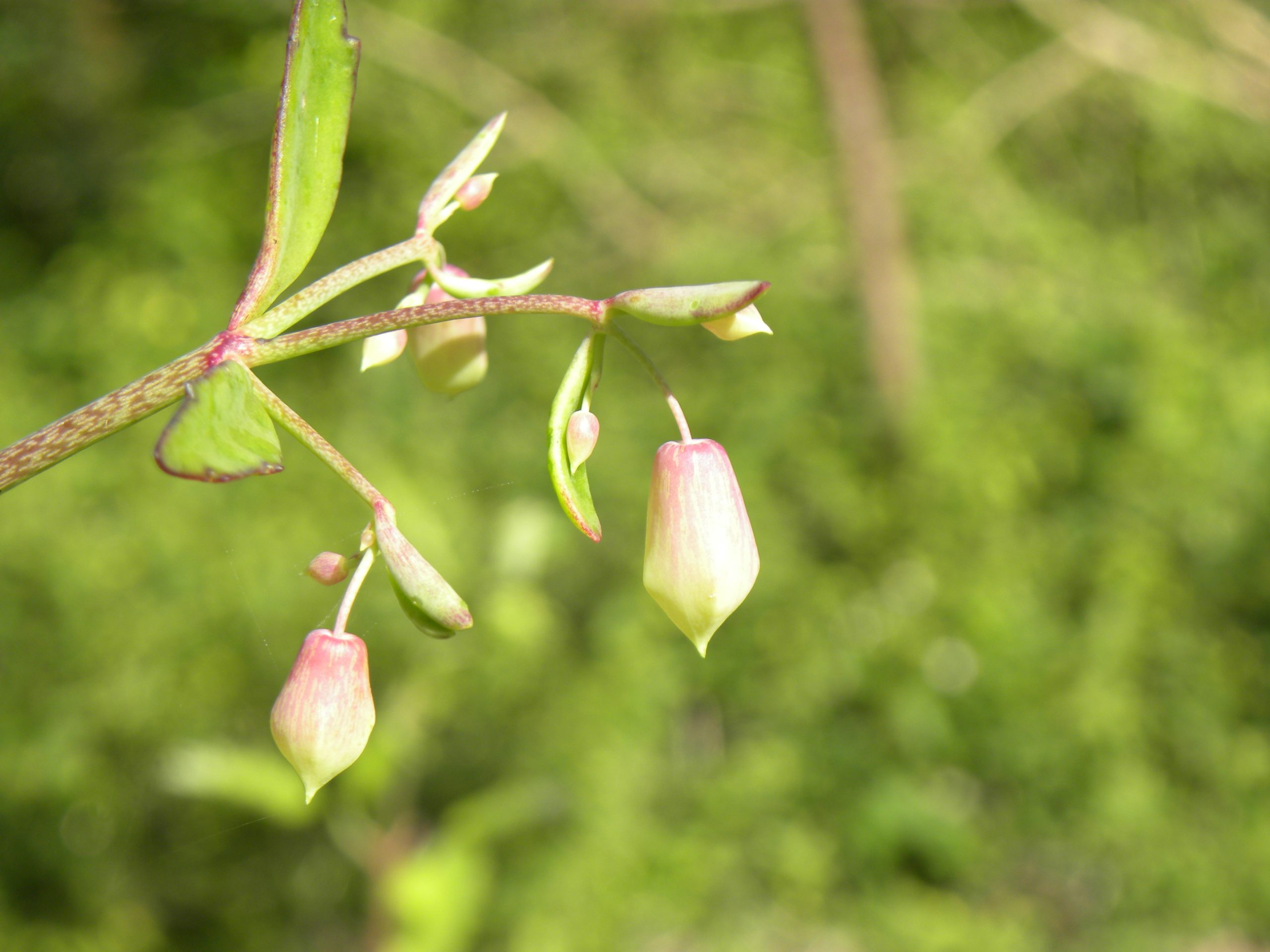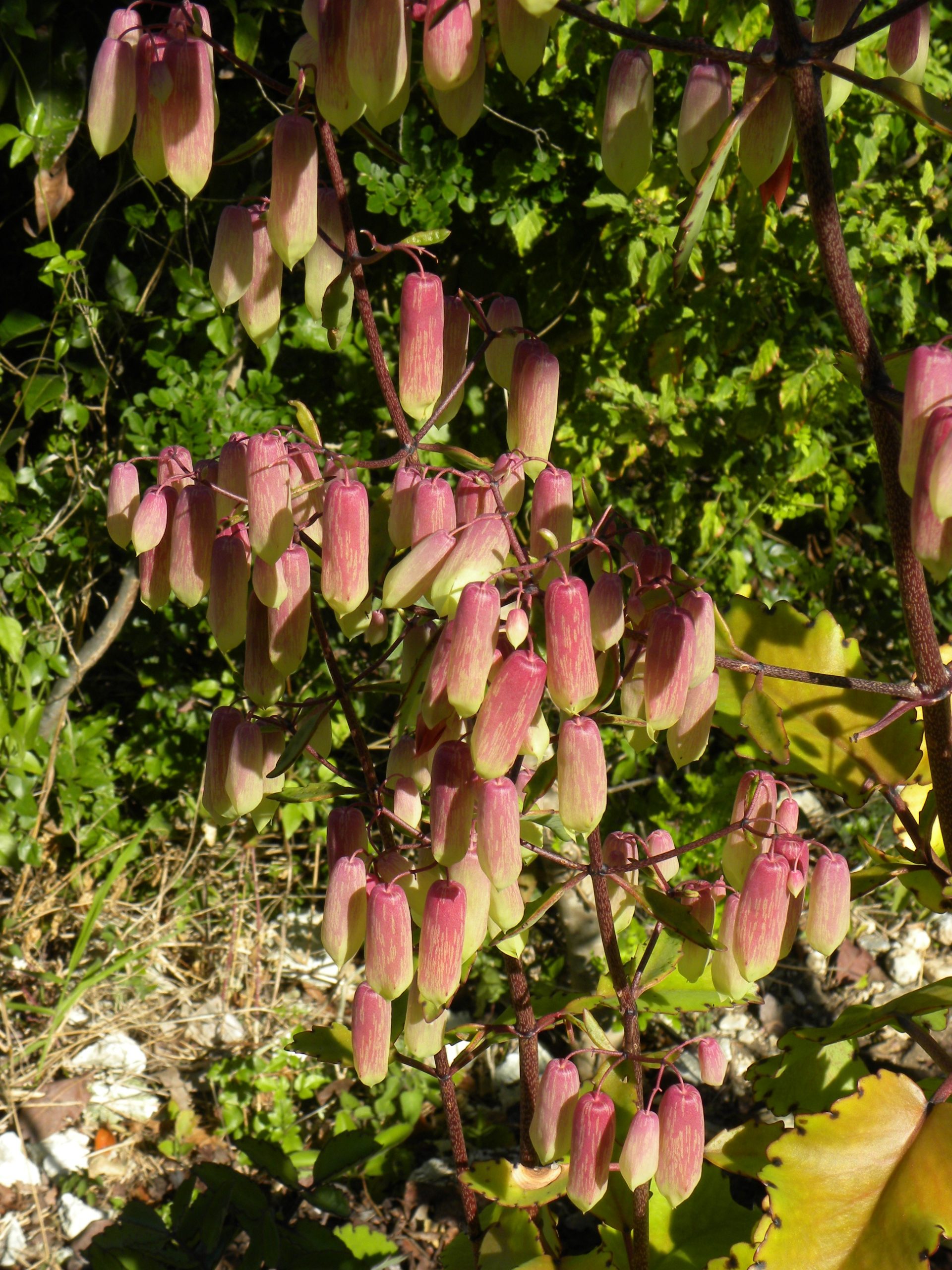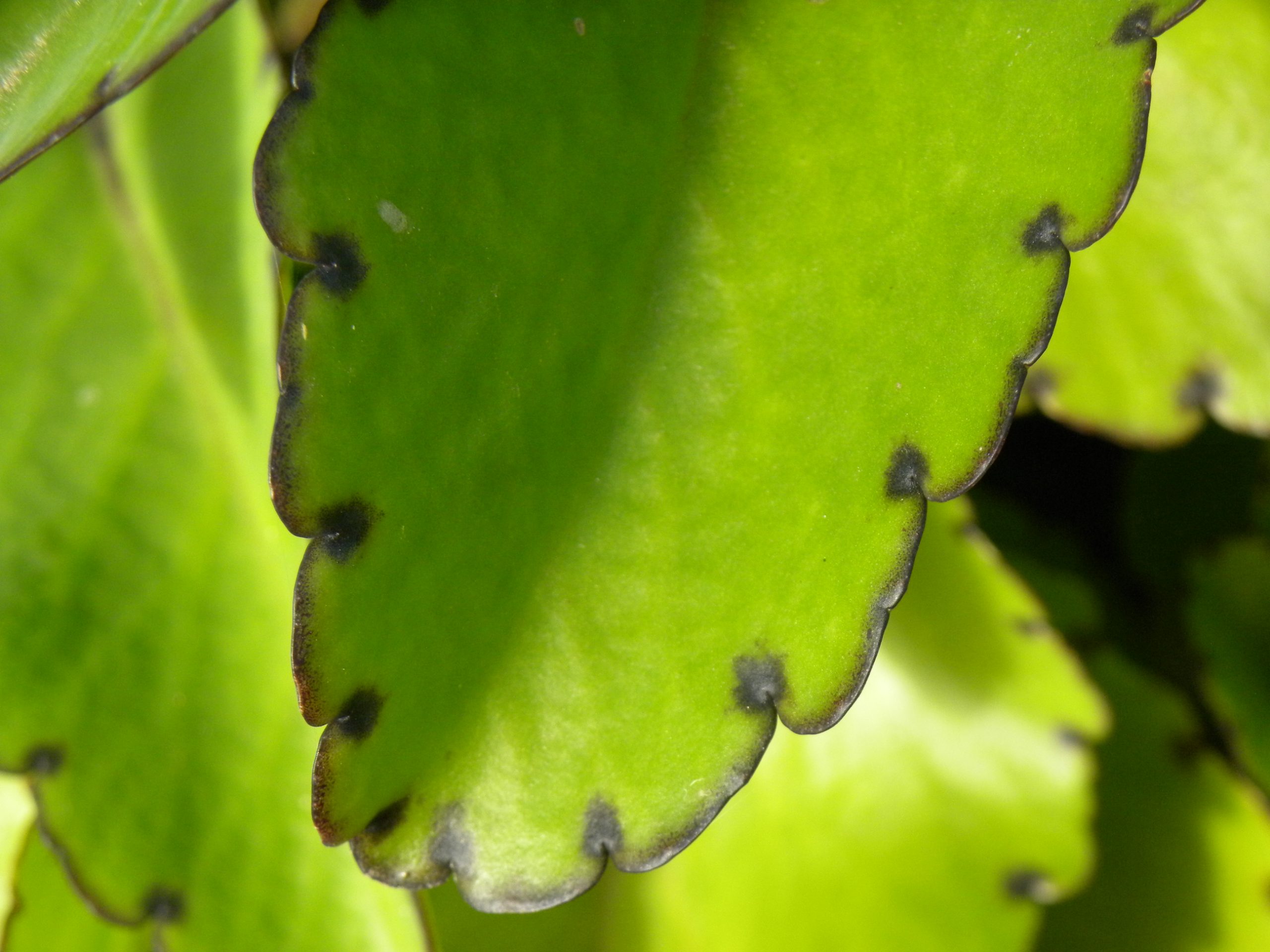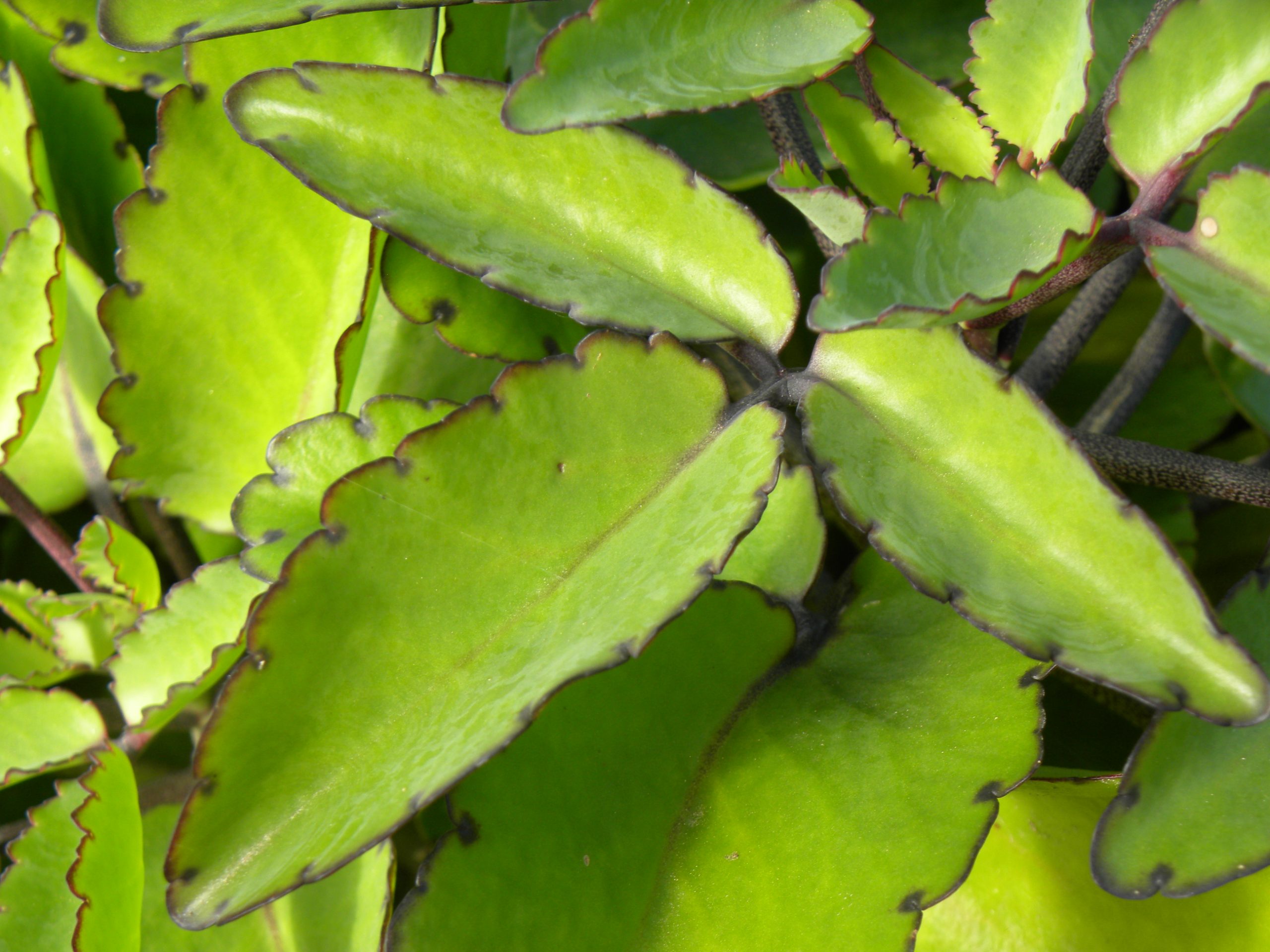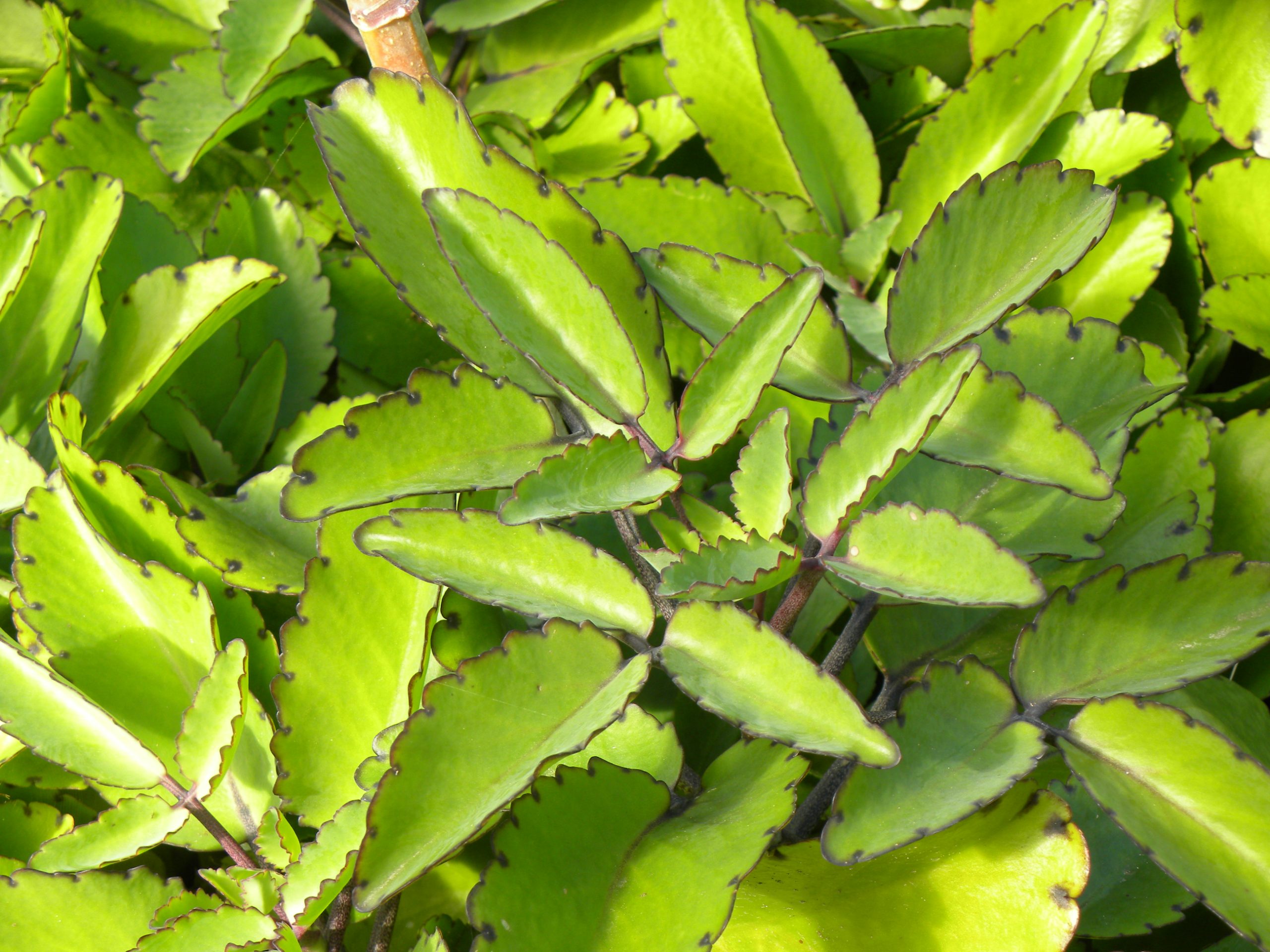Habit: Kalanchoe pinnata grows as a succulent herb to 2 meters tall when flowering, vegetative growth to 50 cm in height with hollow stems. In young plants the oppositely arranged leaves are simple becoming tri-pinnately compound as the plant matures. The leaf/leaflets are elliptic to 20 cm in length with a notched margin that produces plantlets and a rounded apex.
The complete, perfect, actinomorphic, pendulant, flowers are arranged in large panicles. The calyx has 4 fused sepals forming a tube. The corolla has 4 fused petals forming a tube that exceeds the calyx. There are 8 stamens fused to the base of the corolla. The ovary is superior with 4 locules and numerous seeds. The fruit is a capsule at maturity.
Habitat: Kalanchoe pinnata grows in Human Altered environments particularly around abandoned dwellings and the edges of Dry Broadleaf Evergreen Formation- Shrublands as well as in yards and gardens..
Distribution: Kalanchoe pinnata occurs on all island groupings within the Bahamian Archipelago. Kalanchoe pinnata is native to Madagascar but widely distributed through tropical and subtropical regions of the world.
Medicinal/Cultural/Economic usage: While not native to the Bahamas Kalanchoe pinnata is used widely for medicinal purposes including respiratory illnesses (asthma, coughing, tuberculosis) and pain (headaches strains, painful urination/kidney infections).
In other areas of the Caribbean it is used as a cooling tea or as a poultice for sores.
It is also grown as an ornamental but can become problematic as it spreads rapidly by vegetative reproduction.
